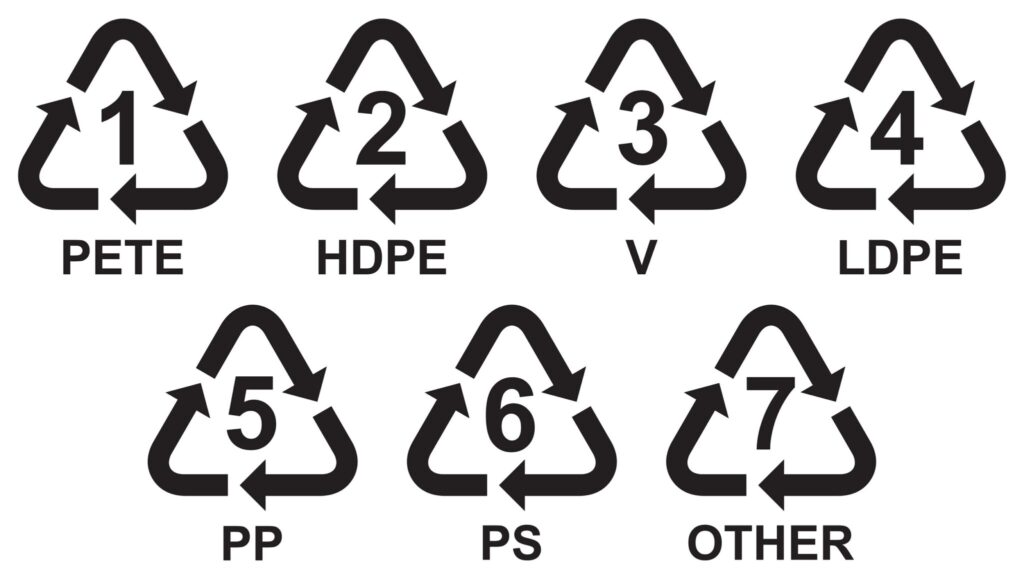Since plastic was invented in 1907 and became part of our modern lives, its growth increased each year exponentially. This versatile yet indestructible material is everywhere now. Take the most in-depth site on Earth with 36.201ft (11.034m) – the Mariana Trench – as an example. If you dive there, you will find plastic.
The world is now producing over 380 million tons of plastic. Half this amount goes to single-uses. Think about plastic straws, plastic bags or plastic cups. You use them once, and then you dispose of them. The problem is that those plastic straws, bags and cups will be here still, even when we won’t.
“But I do recycle. Isn’t that enough?”
Unfortunately, no. Taking our plastic to the recycling bin makes us feel like we are taking care of our planet. This way, we can buy more plastic products. Afterwards, we will recycle them as well. Right?
Well, it doesn’t work that way. Only 9% of the global plastic is actually recycled. This means that the remaining 91% of all plastic we ever used still exists somewhere, even when placed in the bin.
There are several different types of plastic, but only a few can gain a new life. From the few that can be recycled, they are limited to a certain number of times. Recycling is not a simple process, and plastic materials cannot be recycled over and over again. As plastic contains long chains of polymers (molecular structured substances made by several units bonded together), each time it gets recycled, the chain of polymers gets shorter. The final product is plastic with less quality.
Most of us believed in recycling and relied on it over the years, but recycling is far from being the solution to our plastic problem.
Why recycling won’t solve plastic pollution
Most recycling facilities don’t separate the different types of plastics from each other, making the process less efficient. Knowing exactly which kinds of plastic can be recycled is sometimes confusing. Some items can be recycled while others cannot, and that differs from place to place.
Even if consumers commit to just being informed about which plastic is safe and recyclable, the information they get is still ambiguous and time-consuming. Consumers are supposed to find a symbol in every plastic product they buy that tells them what is made of and, consequently, if it’s recyclable.
(suggestion of picture to include in the article – taken from shutterstock – Title suggestion: “Symbols which indicate the different types of plastic”)
The question is, how many consumers will actually look for those symbols? There are no boards or signs with this information in the local markets, big supermarkets or grocery shops. And if there are types of plastic that aren’t safe and cannot be recycled, why are they produced in the first place?
These are some of the few questions we must give our attention to – if we want to change how plastic affects our lives.
Dirty plastic is not recyclable
Until January 2018, China accepted large amounts of plastic from around the globe. However, due to contaminated plastic products, this has changed, and China no longer takes other countries’ waste, unless they are 99.5% cleaned.
Such regulation created more pressure within hundreds of U.S. cities such as San Diego, New York, Deltona in Florida, Philadelphia and Pittsburgh. Take Deltona as an example, receiving $39.000[1] [2] for its recyclables before China’s announcement. Now the scenario changed completely, the cost of recycling almost duplicated, hence no more income is coming from selling plastic.
Without China, the markets left to take in most of our waste are Malaysia, Vietnam and Thailand. And they are not very content to be the world’s dumping ground.
All plastic items must be cleaned before going to the recycling bin; otherwise, they are considered contaminated. Lack of cleaning and mixing materials leads to contamination. This means that dirty plastic items won’t be recycled at all. Instead, they will go to the landfill.
The real cost of recycling
More than a public service, recycling is mostly a commodity business, dependent on supply and demand as any other business. When municipalities produce more recyclables than end markets can take, the value of the product decreases.
Additionally, most plastic going to recycling still finds its way into the trash. In several rural areas, trucks are going half a kilometre between houses, picking up recyclables. Once they calculate the emissions associated with picking up products, sorting them in machines and sending it to markets, it’s not difficult to see that it’s sometimes better to send recycling to the dump. And the question is, can we really blame them? – Imagine how much electricity, water, transportation and carbon emissions are needed to recycle our plastic. There is not enough profit to use recycled products and to make new products from used plastic. Simply put, sending our plastic waste to landfills is many times the cheapest option.
All these issues clarify that recycling is not suitable for our environment, and it doesn’t help the economy.
Recycling was invented by the plastic industry in the first place. Our entire society was told (and we believed) that this was the solution to our consumerism behaviour. It persists not because it’s efficient, but because we feel obligated to do it. It makes us feel better about the waste we produce.
The truth is we cannot recycle our way out of plastic pollution, because we are using too much plastic in the first place.
This is why we must start thinking beyond recycling.
What should we do, instead?
Now that we know this, we must rapidly think about other strategies to get our heads above the surface. A waste-free future looks doubtful if nothing really changes.
Plastic is still one of the most excellent materials to use in about anything. Without it, medicine would not have evolved over the last decades as it did. It is reasonable to think that plastic has its’ important role in our modern society. Yet, we must rethink the way we use it, where we use it, and when. Nevertheless, the less plastic the world consumes, the better.
Sustainable options are ready to play their role and substitute plastic. For instance, sustainable packaging can be as great as plastic and still benefit both the environment and the economy.
Why substitute plastic for sustainable packaging
Sustainable packaging means that it’s biodegradable, which in turn means that its materials can break down over time in a specific environment.
Above all, it’s free of plastic materials that would forever remain in our environment.
Using sustainable materials, in general, would drastically reduce the world’s ecological footprint. And although plastic is cheap and versatile, there are sustainable materials that have a low cost, are easy to process, durable and lighter.
When all industries ditch their plastic habits and switch them for sustainable materials, they will finally serve their clients, consumers and the world in a much conscious way.
How do sustainable materials benefit the economy?
Since plastic pollution turned into a global issue that it can’t be no longer ignored, sustainable solutions started proliferating. Soon enough, they became a trend. When shifting sustainable materials, industries can meet and predict their customer’s demands.
A recent study showed that over 80% of survey participants said they felt it was “important or extremely important” for industries to create environmentally conscious products.
Given nine industries to select from, 1 in 4 respondents said they felt the chemical industry is the least concerned about the environment.
And 77% of respondents said plastic was the least environmentally responsible type of packaging. Paper was deemed the most ecologically safe material.
While the data shows that more consumers are paying attention to a product’s environmental impact, researchers promptly point out that affordability and quality were still the major determinants behind a broad majority of purchases. Sustainability can work for everyone and create a cost-effective business model that increases profit and brand image.
We can create a world where plastic is no longer used as a first option.
Sorry, do you mean $39,000? as in 39 thousand
Yes

Guest Authour
JOANA RITA REIS
A guest writer to the USA Times and qualified Marine Biologist, Joana is a content writer for Naturpac. She focuses on writing about ecological and environmental change. She partners with Naturpac to help educate the supply chain and consumers on the power of change surrounding better packaging choices. She shares the Naturpac vision of a Better Earth.
